I acquired two new fonts of type from Letterpress Things on Saturday.
Tourist Gothic 36 pt.
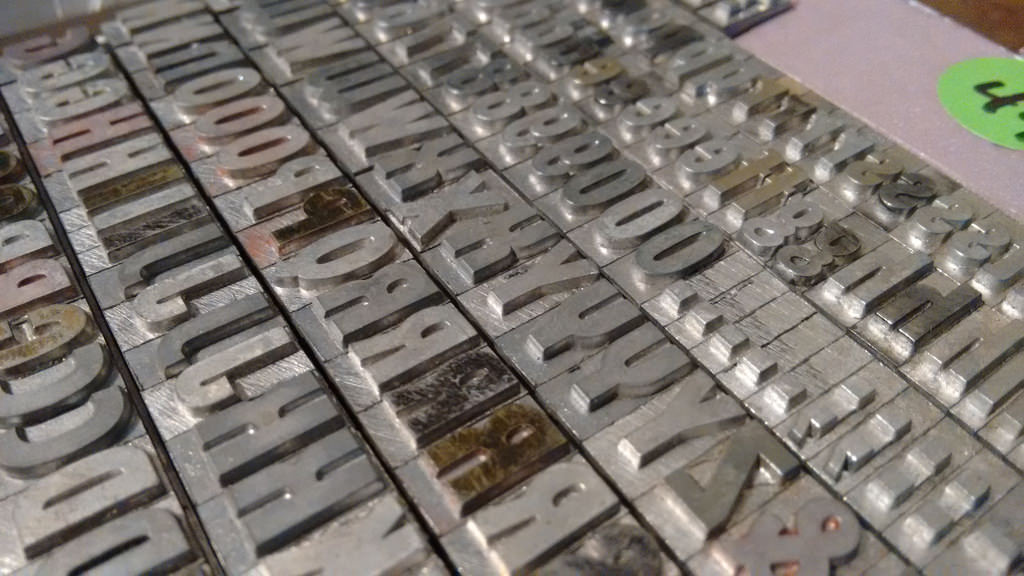
Futura Bold 30 pt.
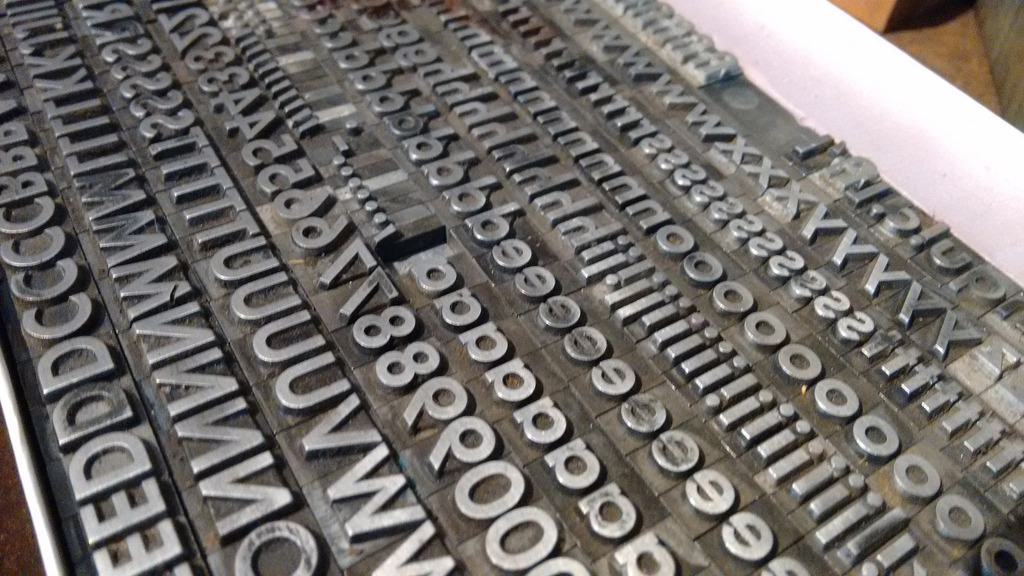
Last night, having concluded my business with my comrades at Yankee Publishing in Dublin, NH, I headed west to Brattleboro, Vermont for the evening.
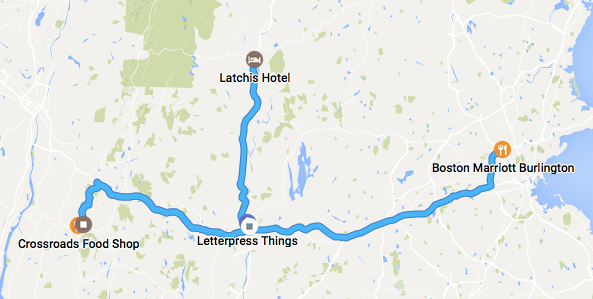
Brattleboro is one of my favourite towns: it’s so palpably Vermont, and yet so New Hampshire-proximal – you need merely look east to see New Hampshire rising up across the river. The Brattleboro Food Co-op is a model for how groceries should be sourced, arranged, managed and sold (and is an excellent place to grab a quick meal to boot). Mocha Joe’s makes a very good cup of coffee. The Latchis Theatre is a gem of a cinema. And the Latchis Hotel, which sits astride the theatre, turns out to be a well-run, scrupulously clean, gem of an art deco hotel. I could live there, easily.
After enjoying the fruits of all of the above – supper at the Co-op, Inside Out at the movies, a night in the hotel and a morning coffee at Mocha Joe’s – I hopped back in my Fiat 500 and turned onto Interstate 91 south toward Chicopee, Massachusetts, home of Letterpress Things, one of the few stops on the North American letterpress printing trail I’d yet to visit. I pulled into Chicopee around 10:00 a.m. and emerged, 2 hours later, equipped with two new fonts of type and various other bits of printing ephemera, happier and wiser for having spent time with John Barrett, personable owner. John has created a wonderful showcase of all things letterpress, a showcase targeted directly at the hobby printer demographic that I fall in the middle of. He’s kind and patient and in it for the joy more than the money. Stock is carefully and helpfully arranged, and John is ready with advice and counsel. I’m so happy I arranged to stay an extra day to be able to make the trip.
Shortly after Noon I loaded up the Fiat with my purchases and headed even farther west, arriving in the hamlet of Hillsdale, New York at 2:00 p.m. where I found my way to the home of Tessa Blake and Ian Williams, friends I see all-too-seldomly (the last time was at Zap Your PRAM in 2008). Ian and Tessa and I caught up over lunch at CrossRoads Food Shop and then, back at their house, I got to finally meet their long-rumoured daughter and a coterie of other Williams and associated acolytes, young and old. Many interesting conversations were shared over cups of tea, and then, as darkness fell and still others started to arrive for supper around their impossibly large table, I bid all adieu and headed back the way I came, toward Boston.
Through darkness and rain I drove for just under 3 hours, finally arriving here in Burlington, Massachusetts around 10:30 p.m., exhausted after a longer day of driving than I’ve had in years.
Three states in twelve hours. Much ground covered. A good way to segue out of New England and back to Prince Edward Island, where I’ll land tomorrow afternoon by way of Halifax. Flying, fortunately, not driving.
The Fiat 500 I rented, by the way, was a replacement for the Prius I originally reserved: the Prius I was offered ended up being a tired, old, dirty, smelly one with many miles on the odometer; when I spied a 500 on the lot I saw my way out, and, happily, one was available. It was a perfect little car for a week of solo motoring: peppy, nimble, and very fun to drive. I’d rent one again in a heartbeat.
I navigated my way around using my Moto G Android phone, using a combination of Waze (helpful, but alas prone to crashing) and Google Maps (less helpful, but rock solid), getting data via a AT&T GoPhone SIM I purchased at the Burlington Mall on the way up to Dublin on Tuesday, using Dan James’s helpful 2011 instructions as a guide. It cost me $2/day on days I made one or more phone calls or sent one or more texts and $1/day on days I only used data (100MB/day, which served me just fine). Coverage was excellent everywhere except in the many dead zones in and around Peterborough and Dublin, NH.
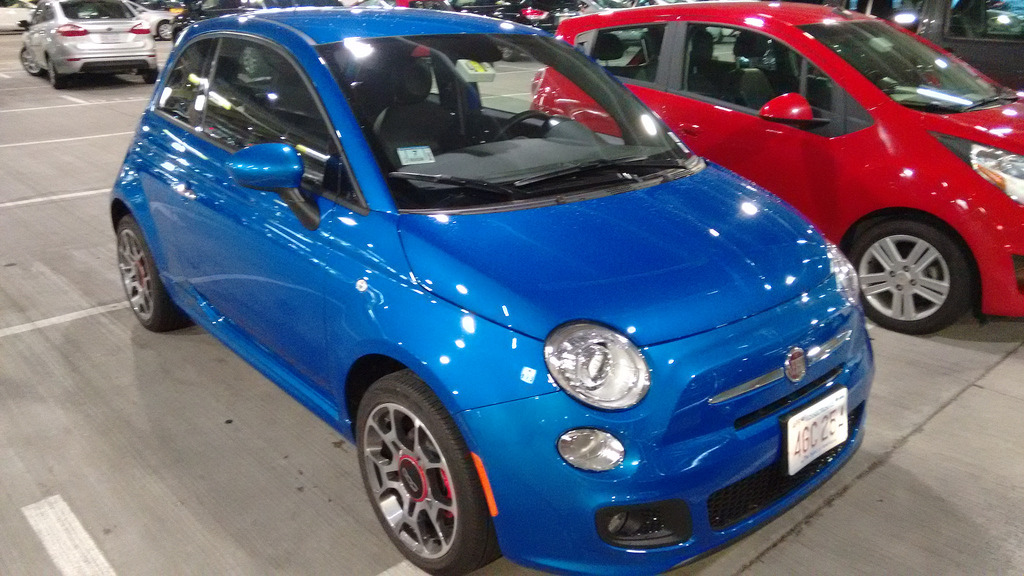
Here’s where life took Oliver and I yesterday, a roughtly-walrus-shaped track from Charlottetown up the spine of the Island, down to Borden, across to Summerside, back to New Glasgow and then home:
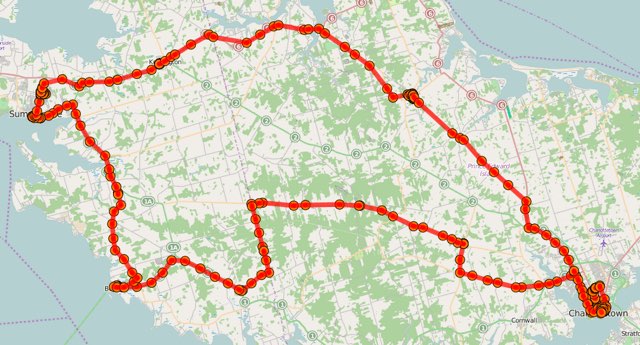
Here’s what we did along the way:
- We had breakfast at the Charlottetown Farmer’s Market, as we usually do.
- We headed out the Kinkora Road and then took a jog down to Lady Fane, ending up at Gateway Village in Borden-Carleton where we had an excellent, fresh lunch at Scapes (pulled-pork sandwich and potato salad for Oliver; fish cakes and green salad for me).
- We took Rte. 10 toward the Bedeques, ending up at Bishop’s Machine Shop in Summerside, recommended to us by Olle and Luisa, who visited last year. It’s a perfectly preserved “like the day he left” machine shop just east of downtown; we had a tour from a sprightly young lad who knew his stuff.
- Coffee and cake at Samuel’s Coffee House downtown.
- Watched the film Ant Man at the Cineplex in uptown Summerside.
- Across to Kensington for supper at the Frosty Treat.
- Along (very) scenic Rte. 6 from Kensington to Stanley Bridge and then down Rte. 224 to New Glasgow for iced tea at the PEI Preserve Company and a walk through the Gardens of Hope.
About 12 hours from start to finish: a good father and son day.
I’m off to New England tomorrow afternoon for the first time since January.
I’ll be spending Monday night through Friday in southern New Hampshire, working with my colleagues at Yankee Publishing on Almanac.com and YankeeMagazine.com.
On Friday night I’m spending the night in downtown Brattleboro, Vermont – one of my favourite towns – staying at the Latchis Hotel for the first time. It’s part of a complex that includes a movie theatre, so what’s not to like?
Early Saturday morning I’ll head down I-91 to Chicopee, Massachusetts to visit Letterpress Things for the first time – “unique store for type and tools, supplies and materials, presses and other items for the letterpress printer.”
And then I’ll head west to Hillsdale, New York to visit our friends Ian and Tessa who I haven’t seen since the last Zap Your PRAM 7 years ago (!).
Saturday night I’m whizzling back to the Boston area, staying overnight in Burlington, and Sunday morning I fly back to the Island.
Perhaps our paths will cross?
Canada’s Chief Electoral Officers – the federal, provincial and territorial officials responsible for the conduct of elections in their jurisductions – held their annual meeting here in Charlottetown on Monday, July 20, and I was asked to speak to them on open data in the same spirit I spoke to the Queen’s Printers Association of Canada last month: open data from a user’s perspective.
I honed the presentation for the elections-focused audience, and I winnowed down my “open data principles” to 5 (from 7), both for time and focus, leaving me with:
- You have no idea (at all) what open data might be used for.
- PDFs are where data goes to die.
- Sometimes “open” can simply mean following rules of design.
- Open data is a conversation.
- Sometimes your users will create open data for you.
I used my work to liberate the recently-released White Paper on Democratic Renewal here on Prince Edward Island as an example of a project that touches on each of those principles.
Although the slides I used for the presentation are less meaningful with out me to walk through them, I’m providing them in a variety of formats, under a Creative Commons license, with hopes that others might build upon them.
- Keynote 6 (47 MB)
- PDF (18 MB; does not include audio clips)
- HTML (exported from Keynote as a “playable” presentation)
- JPEG (26 MB; 87 images, one per slide, in a ZIP file)
- Speaker Deck (web-embeddable)
Logistics for the meeting were expertly handled by the Canadian Intergovernmental Conference Secretariat: the screen projector and audio setup was painless, and my presentation was simulataneously translated into French (leaving me to wonder how idioms like “and once the horses were out of the barn…” were translated).
I went a little wild this afternoon taking the White Paper on Democratic Renewal, released in the Legislative Assembly today, and liberating it from its PDF prison into a variety of more open formats (like ePub, HTML and plain text).
Once the text was out there in the open, I kept right on going, pasting the plain text into TextEdit in my Mac and using the OS X “Add to iTunes as Spoken Track” to convert the text into speech. I then brought the resulting MP3 into GarageBand and added a techo backing track, and then uploaded the result to SoundCloud.
While the text-to-speech is clunky and awkward by times, it’s still remarkably good, and I’m surprised by how much more listenable it becomes with its techo backing.
I arrived at Charlottetown City Hall this morning on my bicycle only to find that the single bicycle rack in front of the building already had a bicycle attached to it, with the space for a second bicycle blocked by a concrete flower planter:
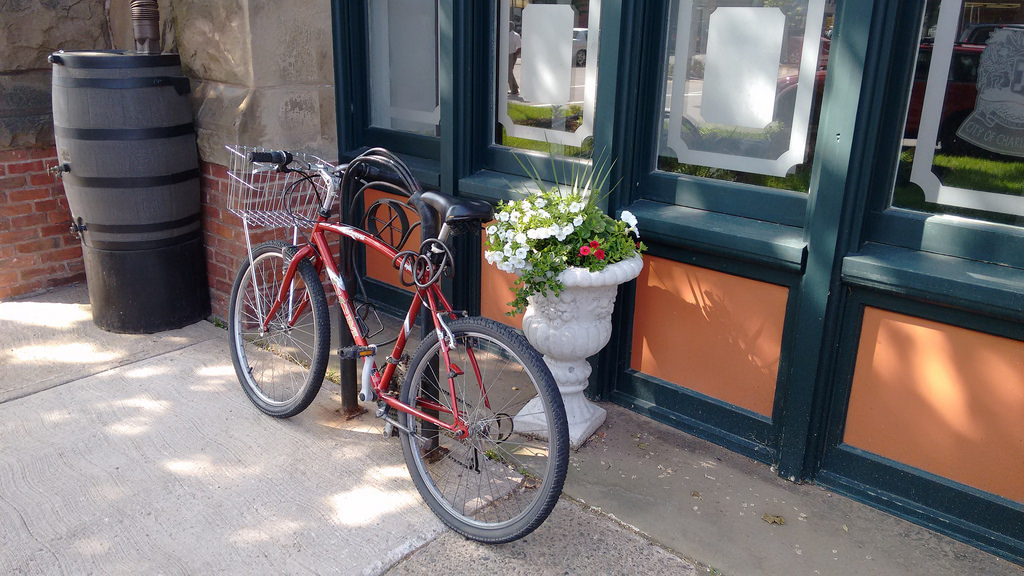
I thought of various ways I could deal with this – angry letters to the Mayor, snarky tweets about “does the city really care about sustainability,” and so on.
Instead of any of those, I simply moved the concrete planter:
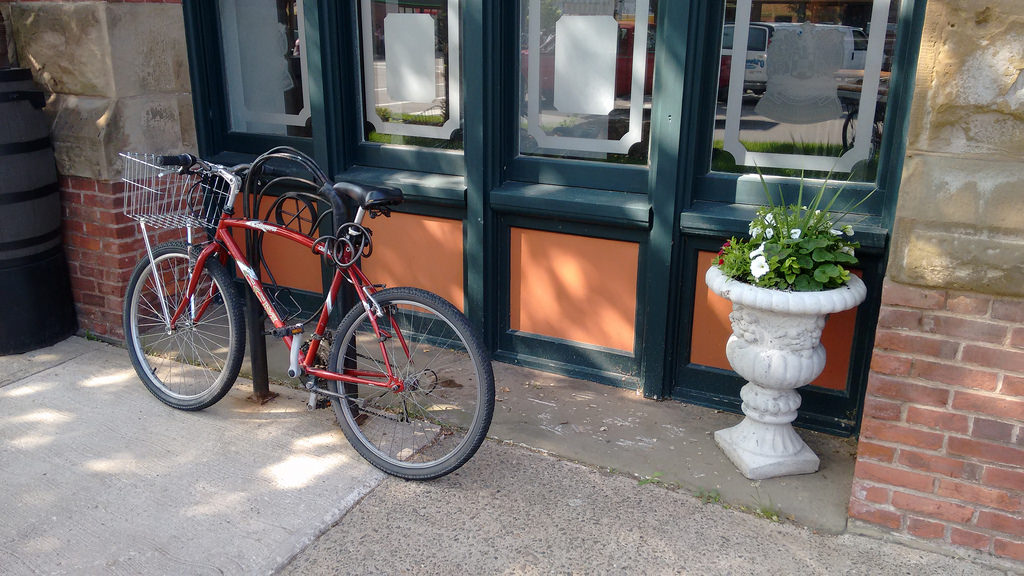
As one of the households in my Social Consumption Project project moved out of town, I was left with a spare Ledbetter board and Raspberry Pi to deploy elsewhere. So I turned to the City of Charlottetown’s Sustainability Coordinator with the suggestion that I install this in City Hall. And she readily agreed. And today was install day.
In preparation, I enclosed the Pi and the breakout board in a new enclosure (as detailed here):
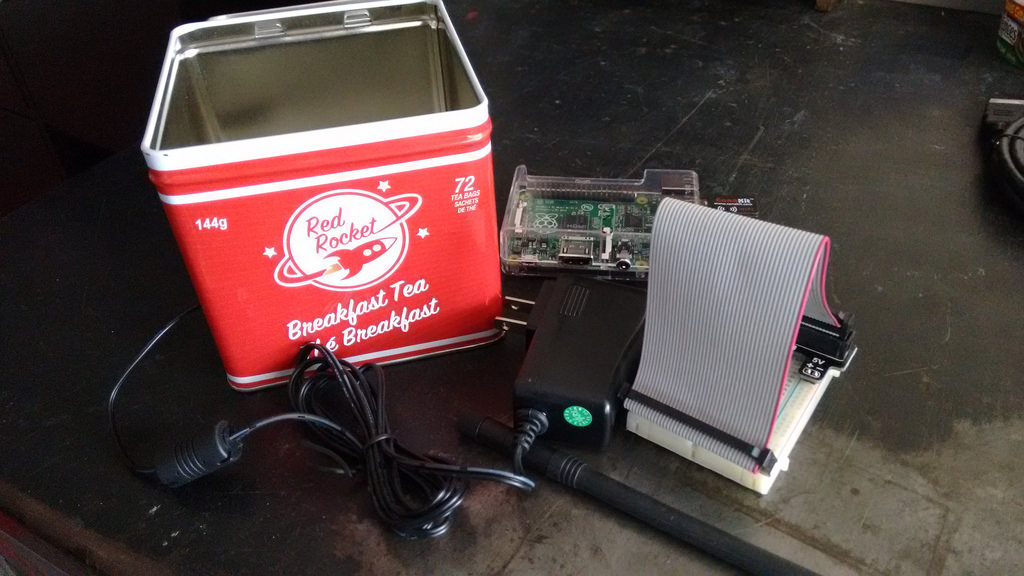
I tested the updated setup here in my office in The Guild for a week; here’s the daily water consumption in litres over that week (yesterday there were three shows in the theatre, so lots of washroom use, hence the uptick in water consumption):

This proved robust (the tin container interfered with neither the USB wifi dongle nor the Ledbetter board’s abilities) and so I was ready to install in City Hall. I loaded up my bicycle and headed that way:
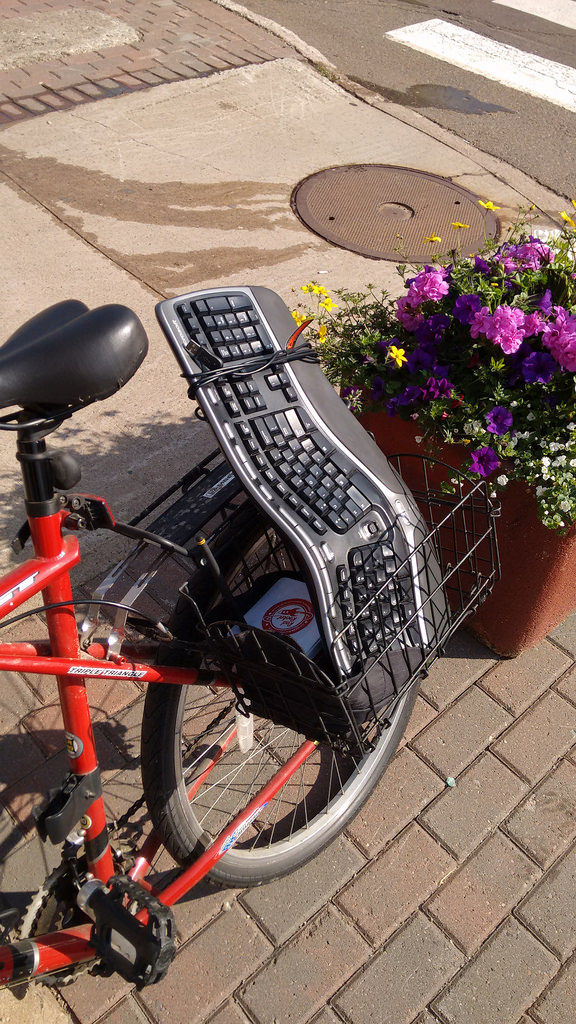
The first task at City Hall was to locate the water meter and obtain its serial number. With some guidance from Public Works, we headed to the basement and found it on the Queen Street side in the utility room:
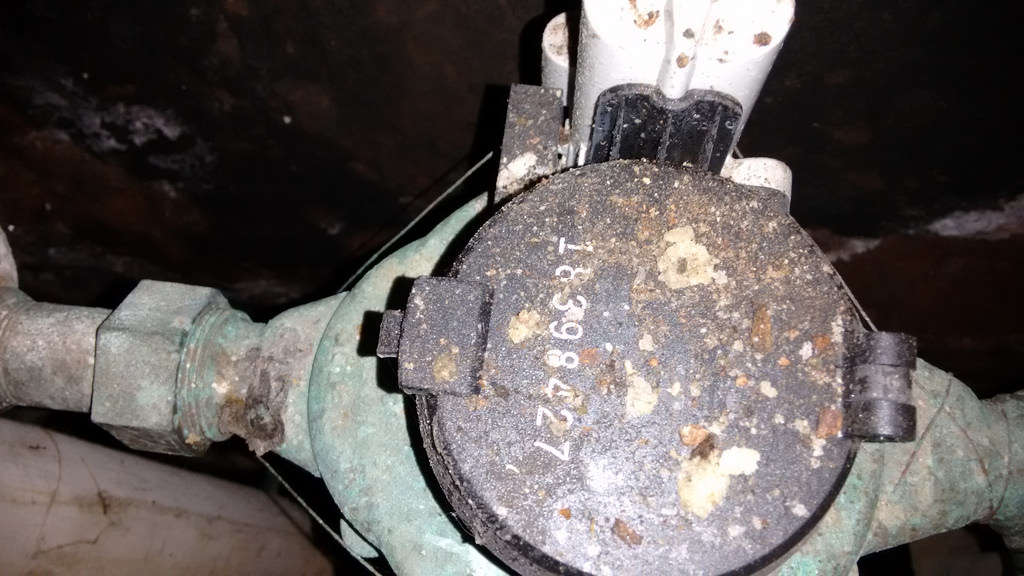
On the wall-wide was the Itron radio meter reader, with its serial number facing the wall, so I had to stand on a chair and use my mobile phone’s camera to take a photo of it, which took a few tried, but ultimately worked:
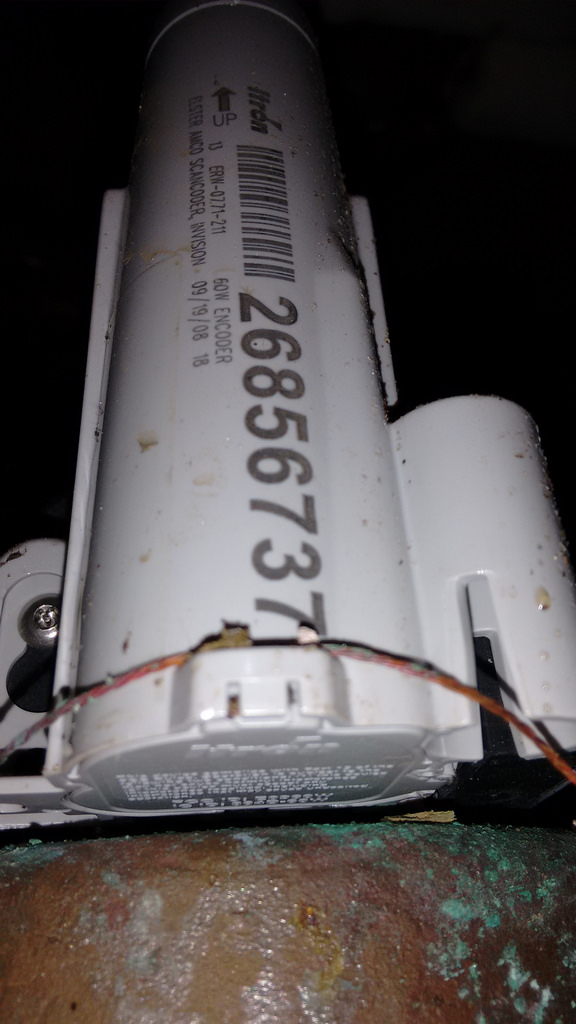
The meter’s serial number is the big number – 26856737.
Next, we found the City Hall electricity meter outide the building in the alley off Kent Street:
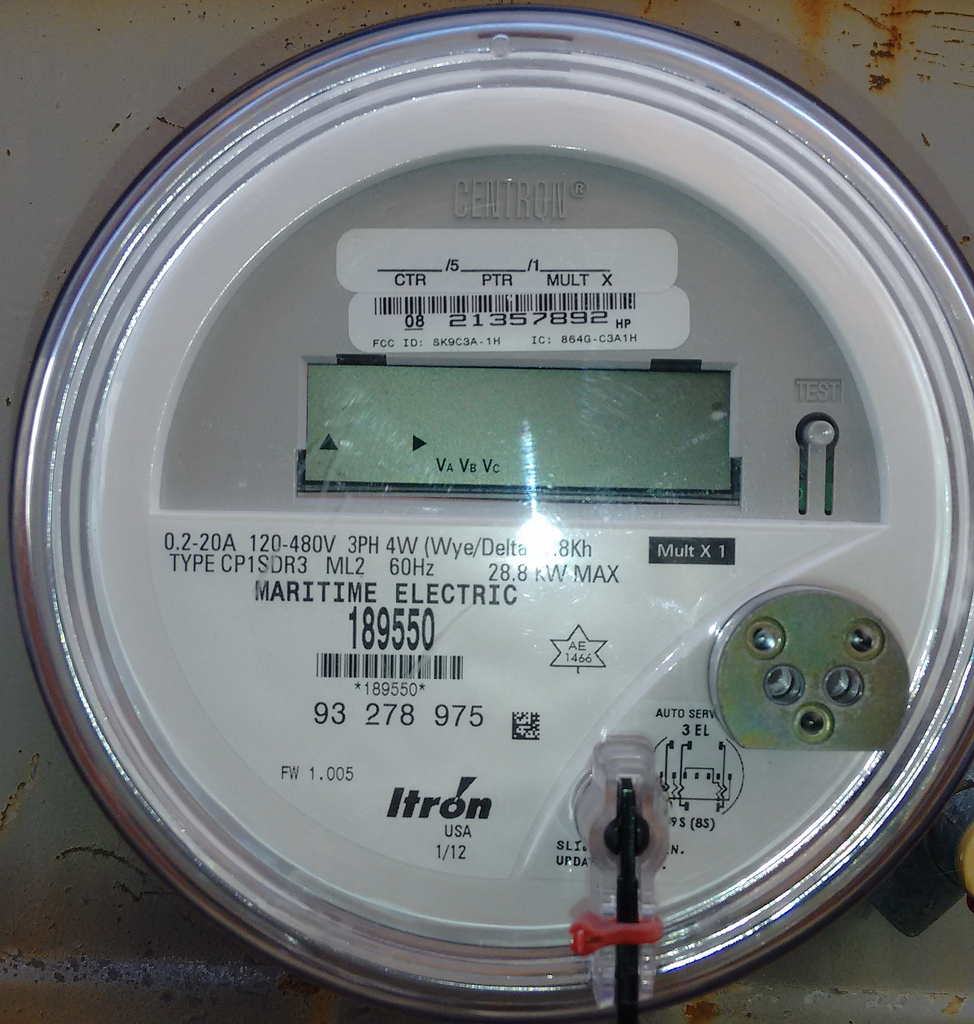
I knew enough from experimenting here at The Guild that this is a 3 phase meter (the 3PH and the meter type of 8 next to the bar code are the giveaways), and that, as a result, the Ledbetter board wouldn’t be able to read it because it’s specifically programmed to skip over the frequency range of that meter type, so we set electricity meter reading aside and concentated on water meter reading.
Up on the second floor of City Hall I got connected to the guest wireless network. This is a closed network, so I needed a wifi password to connect to it, which meant that I had to connect the Raspberry Pi to a keyboard (which I brought) and a monitor (which I borrowed, via a HDMI-to-VGA adapter I brought along just in case). Connecting to the wifi was no problem, but I soon discovered a couple of limitations of the City Hall network setup:
- Devices connected to the network cannot see each other, even if they’re on the same subnet. This isn’t unusual for a guest wifi network, as its primarily intended for visitor use, and visitors would have no need to have their devices see other devices on the network; for my purposes, though, it meant that I couldn’t connect to Node-RED running on the Pi from my MacBook Air on the same network, which made it hard to see if things were working properly.
- Devices connected to the network cannot connect to the Internet on port 22, which prevented me from SSHing, or tunnelling over SSH, to my external database server to see if data was flowing from Node-RED to the database.
I was able to work around these issues by connecting my MacBook Air to a wifi hotspot on my Moto G mobile phone, which allowed me to SSH to my external database server and to confirm that data was, indeed, flowing from the water meter with serial number 26856737 that we’d found in the basement; I could then add the serial number to my list of recognized meters, and the data started to appear on my internal dashboard:

With everything working as it should, I unplugged everything, set the “Red Rocket Pi” in an out-of-the-way corner, and left it to continue to log data.
The city’s sustainability committee now has to meet to decide whether the data on City Hall’s water consumption can be made public; that should happen in the next few weeks.
Here are the steps I took to install Node-RED on my Raspberry Pi B, and then to wire it up to a DHT22 humidity and temperature sensor to log the conditions in my office. It’s based on my work last year using Node-RED to log electricity and water consumption data.
First, I wired up the DHT22 on a breadboard connected to my Raspberry Pi’s GPIO port by ribbon cable, using the helpful Adafruit guide here. The result looked like this:
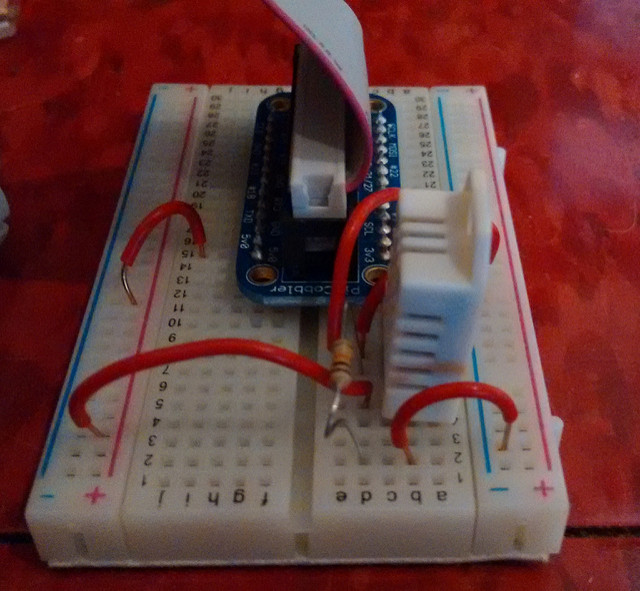
Next, I installed Node and Node-RED, as detailed here:
wget http://node-arm.herokuapp.com/node_0.10.36_armhf.deb
sudo dpkg -i node_0.10.36_armhf.deb
sudo npm install -g --unsafe-perm node-red
That last step took a while (5 to 10 minutes). I was patient.
Next, I installed DHT22 support for Node-RED, first installing the bcm2835 library:
wget http://www.airspayce.com/mikem/bcm2835/bcm2835-1.58tar.gz
tar zxvf bcm2835-1.58.tar.gz
cd bcm2835-1.58
./configure
make
sudo make check
sudo make install
And then:
sudo npm install --unsafe-perm -g node-dht-sensor
sudo npm install --unsafe-perm -g node-red-contrib-dht-sensor
I then started up Node-RED:
node-red-start
I was then able to see Node-RED from a browser at http://hostname-or-ip-address:1880/
I created a Node-RED workflow to read the temperature and humidity every 5 minutes and upload it to a PHP script on my webserver that squirrels it away in a MySQL database:
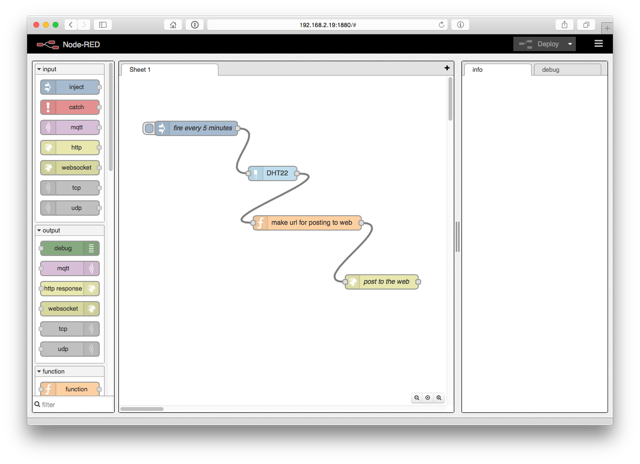
The key here was figuring out the settings for the DHT22 node, which required selecting BCM GPIO as the “pin numbering” scheme:
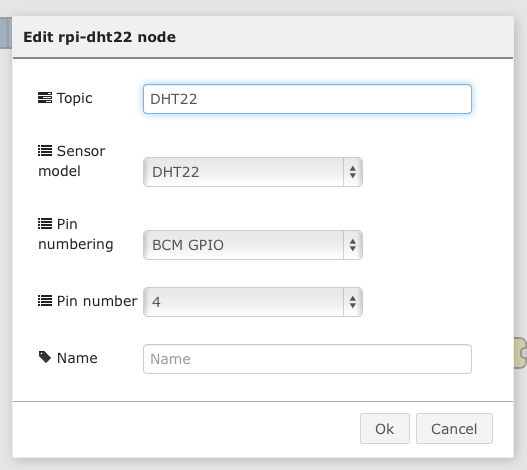
After that it was simple as running a functio node to make a URL for posting to my server:
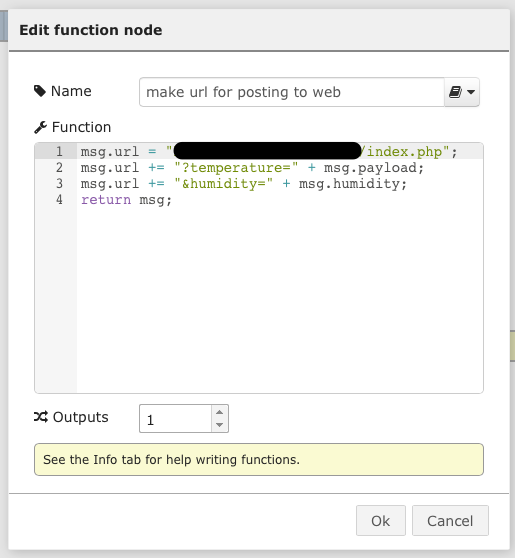
and sending that to an HTTP Request node.
I fired things up and the data started to flow:
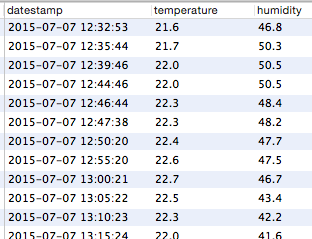
And from there I was able to export the data and make pretty charts:
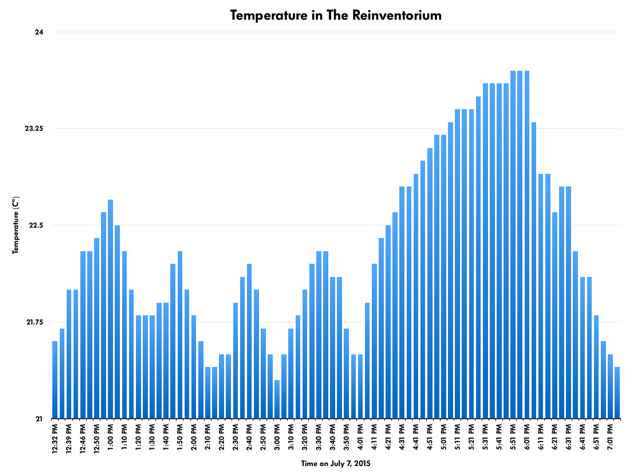
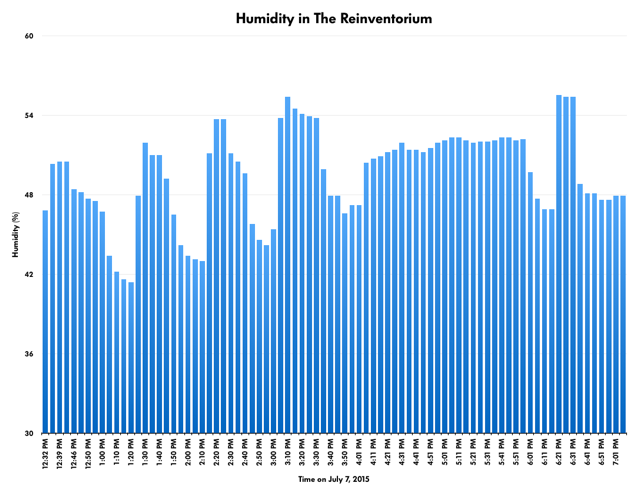
Remember how I mentioned that, here in Prince Edward Island, the ballot boxes from the Provincial General Election are burned in an incinerator that, in part, generates the heat for Province House where MLAs elected in those elections meet?
Well out at The Fifth Ingredient in Cape Traverse they take the pizza boxes they’ve just served you your pizza in and burn them in the oven. To make more pizza.
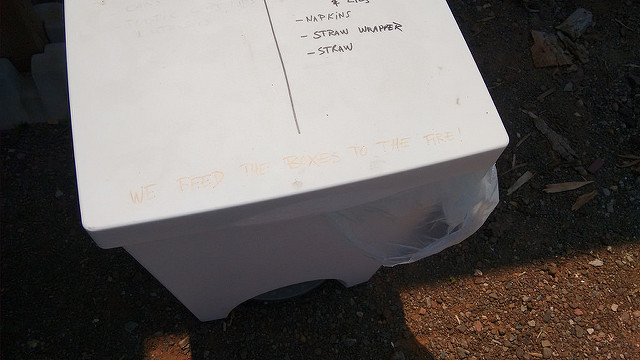
 I am
I am